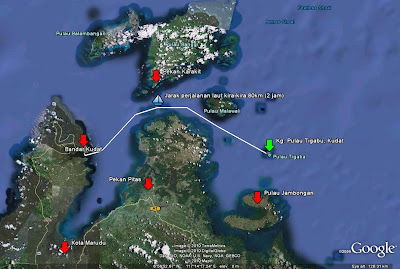STAR2: In these islands, villagers dive into efforts to protect a marine park
How do you convince villagers that a marine park will benefit them?
Yusof Bural of Pulau Banggi used to go fishing with bombs and cyanide – these easy but destructive methods were common among locals. Pulau Banggi is an hour by ferry from Kudat town in north Sabah.
Some 10 years ago, he and his brother Omar were drawn in by the opportunity to learn scuba diving with WWF-Malaysia (WWF-M). That’s when they saw for themselves how blast fishing had devastated the island’s corals, the very breeding ground of fish that the islanders depend on for their livelihoods. They also saw how villagers had been injured in bombing accidents.
So in 2009, they and their friends formed the Banggi Youth Club. Nowadays, instead of going out to sea with bombs or poison, they go in with toothbrushes!
Dedicated Banggi Youth Club volunteers have built metal frames and tied living coral fragments to rebuild destroyed reefs. But to get the coral pieces to start growing, for the first month, they have to keep brushing them to remove algae.
(WWF-M notes that coral replanting is costly and slow. It’s better to protect corals by stopping bombing and trawling near reefs, controlling land pollution, and encouraging eco-friendly marine tourism.)
image: http://cdn.star2.com/wp-content/uploads/2016/08/str2_xsTunPark_side_xs_2.jpg
The community in Taritipan village has been replanting mangroves to enrich local marine life.
Another problem is garbage. Banggi has a population of roughly 20,000 but lacks proper municipal trash collection, so much of it ends up in the sea or coast.
To reduce this, Banggi Youth Club has organised drawing contests and puppet shows in the island’s 14 primary schools to promote recycling and reducing plastic litter.
Since 2003, WWF-M has worked closely with Sabah Parks to explain, engage and build long-term relationships with many villagers to convince them of the benefits of the Tun Mustapha Park.
Two pilot sites – on the island of Maliangin and the village of Berungus – were set up to show the benefits of protecting marine areas.
“We arrange for other villagers to visit here,” says Joannie Jomitol, the lead community organiser in Kudat for WWF-M.
“When they see that others have succeeded in increasing their fish stocks, they also want it for their own village.”
image: http://cdn.star2.com/wp-content/uploads/2016/08/str2_xsTunPark_side_xs_1.jpg
Women from the Maliangin Island Community Association weave mats and other souvenirs from pandanus leaves to reduce pressure on fisheries.
And so, from the initial two pilot sites, three new demonstration sites have been set up at Tigabu island, Balambangan island and Taritipan village. WWF-M has also helped the villagers form community groups to support conservation.
Villager Awang Sallehen Awang Harun helped set up the Taritipan Youth Fishermen’s Group. They have been active in promoting the traditional tagal system (where only certain areas and times are allowed for fishing) and in replanting mangroves.
“From these efforts, we now see more fish around our village,” says Awang.
On tiny Tigabu, visitors can see what happens when all the reefs have been bombed out. The villagers have now turned to farming sea cucumber to survive.
On Maliangin island, the small community there has not only been trying to protect its traditional fishing grounds. The Maliangin Island Community Association (Mica) has also been renewing the island’s traditional craft of weaving mats and pouches from pandanus leaves as an alternative livelihood to reduce pressure on fisheries, says Noraini Rosman, who leads Mica’s women’s wing.
It is such crucial community efforts that will help residents realise that conservation is in their best interests.
Read more at http://www.star2.com/living/living-environment/2016/08/17/villagers-in-pulau-banggi-dive-into-efforts-to-protect-marine-park/#KFazy356yCdAAatR.99
Article from
STAR2.com
(http://www.star2.com/living/living-environment/2016/08/17/villagers-in-pulau-banggi-dive-into-efforts-to-protect-marine-park/)
Posted on 17 August 2016




Comments
Post a Comment